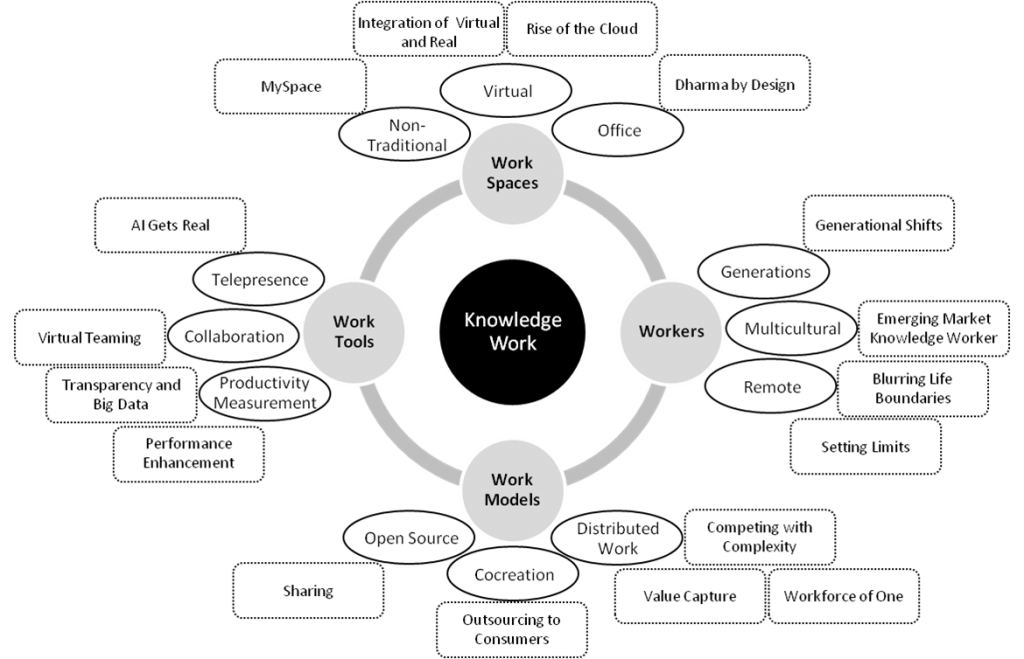The research for the future of knowledge work project — upon which our article in Employment Relations Today was based — identified more than 120 relevant business and technology trends and shifts in consumer values. These elements were clustered and synthesized into 17 drivers of change shaping the future of knowledge work. From my experience, that’s a rather large number of “key” drivers to work with. Most of my project work involves a research/scanning phase that gathers “raw materials” and produces a trend inventory that is in turn synthesized into key drivers that will form the foundation or building blocks of the forecasts/scenarios to follow. It’s more common to have a smaller number of drivers [just a comment since we often talk methodology here].
The research/scanning > trends > drivers build off the domain map. The drivers are organized by how they flow out of the domain map. I’ll briefly characterize the set of drivers around each of the main categories — spaces, workers, models, and tools — in a series of posts.
Armed with these drivers, the next step was to analyze how each played out under each of the four archetypes — but let’s save that for when we get there. Andy Hines

Very interesting, Andy. I like the approach.
It’s not only knowledge work that’s being impacted – other kinds of work too in the ways they are carried out, and in many cases hands-on work being transformed to be knowledge work or to have high knowledge content.
You may be interested in our report that examines this and other trends in the evolving world of work, and their wider impacts, “It’s Work But Not As We Know It”. It’s downloadable from
http://www.flexibility.co.uk/ItsWorkBut/index.asp
excellent, thanks so much for sharing the link to your work. That’s what you hope will happen in sharing your work — others share theirs and we all benefit!
Andy, thank you for the fine work. The graphic suggests to me the opportunity to link several topic areas, in this case, Office, Distributed Work, Remote and several of the work tools into a more holistic understanding that we need to evolve beyond the single location office model (combined with the alternate location work strategies) of today to a more structured distribution of jobs by developing a more structured multi-location model of distributed work centers. We seem to presume that our current ‘THE office” and remote work alternatives are our only approaches. Secure networks of clustered distributed work centers might offer a better solution for more workers, employers and communities.
hi Michael, thanks for the kind words. you raise an interesting point: “developing a more structured multi-location model of distributed work centers.” Who are you thinking does that? Governments? private sectors? Some informal hodge podge is emerging along these lines, but not in any coordinated type of fashion.